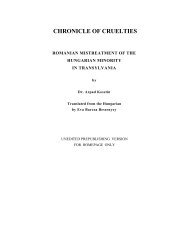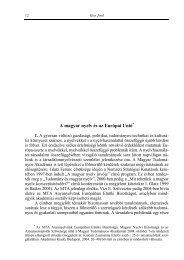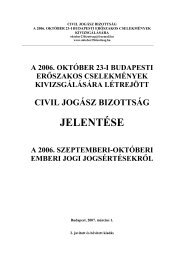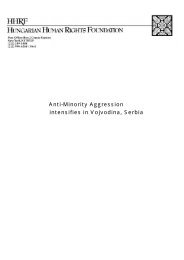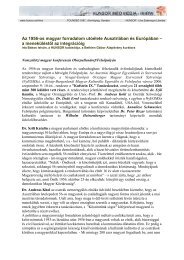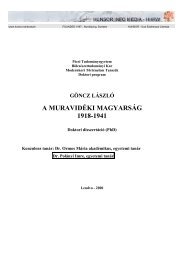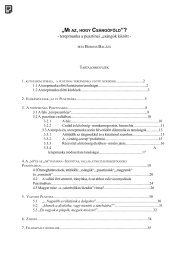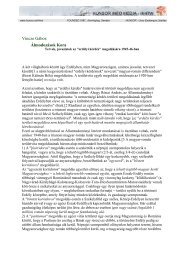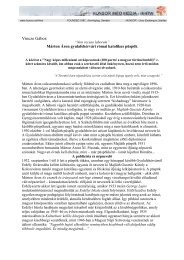PLEASE NOTE: This book contains graphic description ... - HUNSOR
PLEASE NOTE: This book contains graphic description ... - HUNSOR
PLEASE NOTE: This book contains graphic description ... - HUNSOR
You also want an ePaper? Increase the reach of your titles
YUMPU automatically turns print PDFs into web optimized ePapers that Google loves.
5. Karoly Milanovics, Sandor's son6. Janos Krizsan, farmer7. Andras Krizsan, Janos's father, farmer8. Ferenc Varga, farmer9. Istvan Tokos, shopkeeper10. Istvan Tokos, the shopkeeper's son11. Gyorgy Zorad, owner of a threshing machine12. Sandor Kiss, policeman13. Mihaly Kormos, fisherman14. Ferenc Varga II, farmer11515. Istvan Nagy16. Janos Paska17. Istvan Kasza18. Ferenc Hegedus, farmer19. Jozsef Halasz2o. Janos Bagi, policeman21. Antal Toth, the first to be shot22. Sava Radosaljevics and23. Janos Kalapati,Levente-instructors,24. Antal Dujmovics, policeman25. Pal Dujmovics, a twelve-year old boy26. Mihaly Ternovac27. Janos Bozso28. Antal CsukaFrom Dunagardony (Gardinovce) and Sajkasszentivan (Sajkas) we have no data aboutthe massacre of Hungarians in 1944 of these two sparsely populated settlements. They werepractically defenseless and the 1981 census counted seven Hungarians in one village, eighteen inthe other. The bloody reprisal was inevitable, because the 1946 registry <strong>book</strong> records thirtyeightand seventeen Serbians, respectively, who fell victim to the Hungarian raid.In Tiszakalmanfalva (Budisava) the partisans regularly blew up trains. Because of this,the raiding Hungarian Corps rounded up the peasants from the Serbian farms that surrounded therailway. After lining up the first group at the wall of the Village Hall, prepared to executetwenty people. The Hungarians living on these farms, who had been living in peace with theirneighbors all along, rushed to the scene and surrounded the victims pleading for their innocence,prevented the reprisal. The militiamen did not shoot.The partisans entering in the fall of 1944, were not informed of the humanitarian act of theHungarian peasants. On October 20, they rounded up some thirty of them who never came back.They were said to have been transported to Zsablya and were exterminated.



